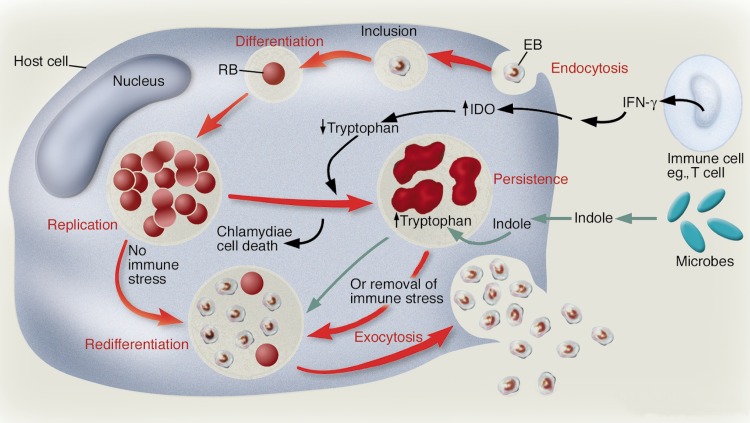Fig 1.
Overview of the developmental stages in a chlamydial infection. At the upper right, an infectious EB attaches to the host cell, with subsequent differentiation to an RB, which replicates within an inclusion. RBs may complete the cycle by differentiation back to EBs, which are released in conjunction with host cell lysis. Alternatively, RBs may respond to Trp starvation (caused by induction of IDO triggered by IFN-γ) by entering a quiescent stage of persistence. Genital strains of C. trachomatis can utilize environmental indole as a precursor of Trp. (Reprinted from reference 93 with permission of the American Society for Clinical Investigation.)

